Catalogue > Faire une recherche
Résultats pour : Tout le catalogue
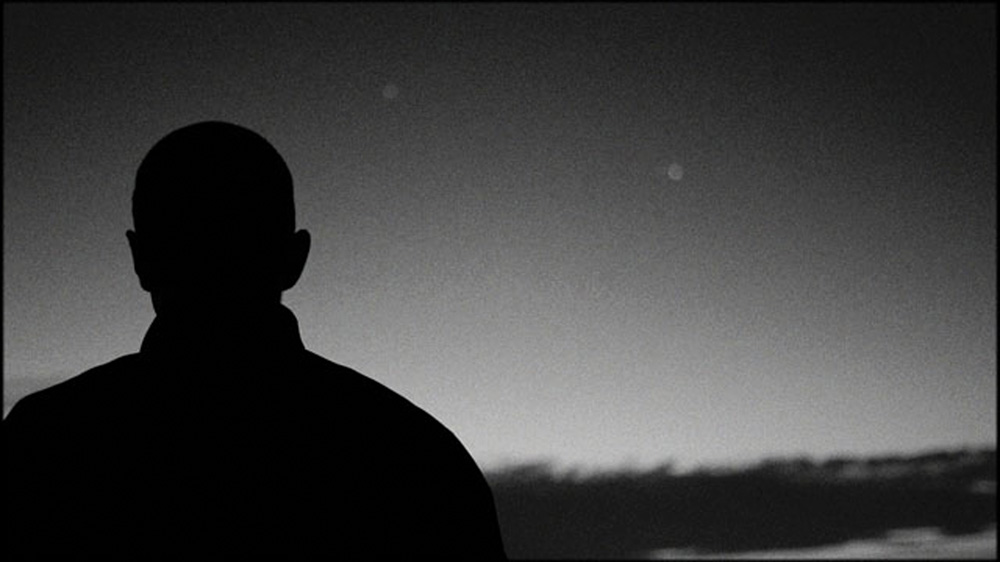
Sandro Aguilar
Bunker
Fiction | hdv | noir et blanc | 30:17 | Portugal | 2015
A young girl spending time with her parents (a swinger couple) in a camping site meets an emotionally unstable recruit and becomes fascinated by his special powers. He falls in love with her, but he soon finds out his love is unrequited.
Born in 1974 in Portugal, Sandro Aguilar studied film at the Escola Superior de Teatro e Cinema. In 1998 he founded the production company O Som e a Fúria. His films have won awards at festivals, such as La Biennale di Venezia, Gijón, Oberhausen and Vila do Conde, and have been shown in Torino, Belfort, Montreal, Clermont-Ferrand among others. Retrospectives of his work have been programmed at Rotterdam IFF and BAFICI.
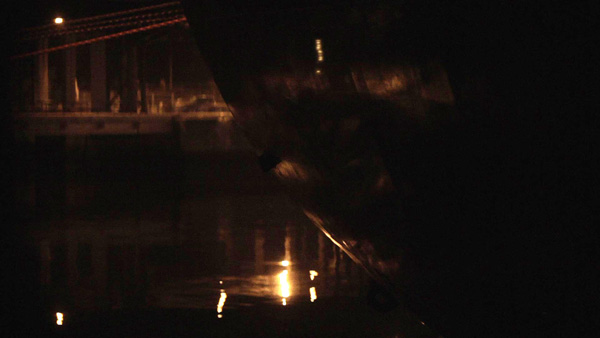
Sandro Aguilar
Dive : approach and exit
| | | 12:13 | Portugal | 0
Before the assault, feel the weight of the body.
Born in 1974 in Portugal, Sandro Aguilar studied film at the Escola Superior de Teatro e Cinema. In 1998 he founded the production company O Som e a Fúria. His films have won awards at festivals, such as La Biennale di Venezia, Gijón, Oberhausen and Vila do Conde, and have been shown in Torino, Belfort, Montreal, Clermont-Ferrand among others. Retrospectives of his work have been programmed at Rotterdam IFF and BAFICI.
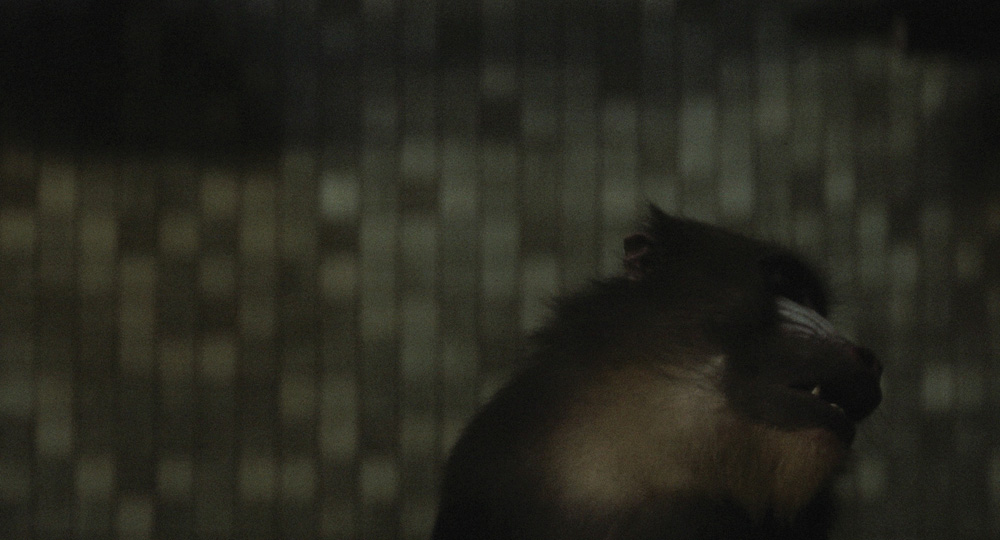
Sandro Aguilar
FALSE TWINS
Fiction | hdv | couleur | 21:0 | Portugal | 2014
Hidden memories and lost treasures of our primeval inhabitants.
Born in 1974 in Portugal, Sandro Aguilar studied film at the Escola Superior de Teatro e Cinema. In 1998 he founded the production company O Som e a Fúria. His films have won awards at festivals, such as La Biennale di Venezia, Gijón, Oberhausen and Vila do Conde, and have been shown in Torino, Belfort, Montreal, Clermont-Ferrand among others. Retrospectives of his work have been programmed at Rotterdam IFF and BAFICI.
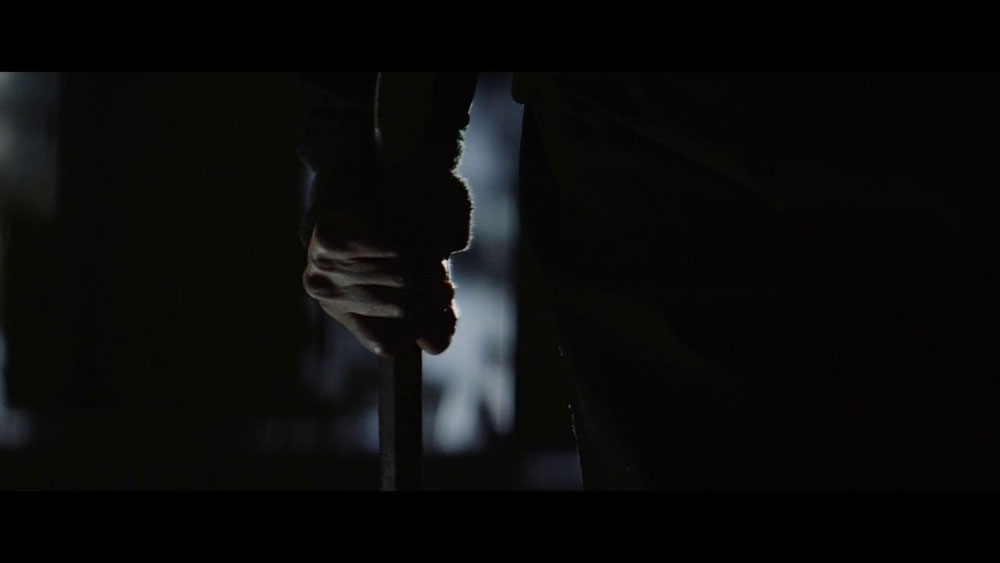
Sandro Aguilar
Mariphasa
Fiction | 4k | couleur | 87:0 | Portugal | 2018
Paulo works as a night guard in a building site. He lost his daughter in dramatic circumstances and no regret would ever give him a sense of closure . He often sleeps in his lover`s house where he witnesses the repeated transgressions of an unstable neighbor. Everything threatens to crack.
Born in 1974 in Portugal, Sandro Aguilar studied film at the Escola Superior de Teatro e Cinema, in Lisbon. In 1998 he founded the production company O Som e a FuÌria. His first fiction feature film was UPRISE (2008). MERCURY (2010) was in competition for the Tiger Awards for Short Films at IFFR 2011. His films have won awards at festivals, such as La Biennale di Venezia, GijoÌn, Oberhausen and Vila do Conde, and have been screened in Torino, Belfort, Montreal, Clermont-Ferrand among others. Besides being a director, Aquilar is an editor and a producer. MARIPHASA is his second feature film.

Sandro Aguilar
Porto, 1975
Doc. expérimental | hdv | couleur | 10:0 | Portugal | 2011
Applying the same economy used in Allee der Kosmonauten (one sole unrolling 16 mm film role with no montage) a long tracking shot at the Cooperativa das Águas Férreas da Bouça, a social housing complex designed by Álvaro Siza Vieira and an integral part of the SAAL (Serviço Ambulatório de Apoio Social, 1974-76) programme. The place is Oporto, in 2010, but the memory of the complex circumstances surrounding the construction of these dwellings take us back to 1975 and a tumultuous moment in Portugal?s past.
Filipa César was born in Porto in 1975. Lives and works in Berlin, and studied at the Faculty of Arts in Porto and Lisbon (1996?99), the Academy of Arts in Munich (1999?2000) and MA Art in Context, University of Arts, Berlin (2007). César is an artist and filmmaker whose work reflects on the porous nature of the relationship between the moving image and its public reception. Informed by her interests in exploring the fictional aspects of the documentary genre, and imbued with an urge to point out the politics behind moving images, works such as F for Fake (2005), Rapport (2007), Le Passeur (2008), The Four Chambered Heart (2009), and Memograma (2010) walk the thin line between storytelling, chronicling, documentary, and experimental film. César?s installations suggest possible settings for an expanded production of moving images, which actively engage the spectator in his or her role as perceiver, and which are constituted by the presence of socio-political concerns. In Filipa César?s work the image evolves out of a struggle between real-memory and cinema-memory. Filipa César has exhibited, among other places, at 8. Istanbul Biennial, 2003; Kunsthalle Wien, 2004; Serralves Museum, 2005; Locarno International Film Festival, 2005; CAG- Contemporary Art Gallery, Vancouver, 2006; Tate Modern, 2007; St. Gallen Museum, 2007; International Triennale of Contemporary Art, Prague, 2008; SF MOMA, San Francisco 2009, 12th Architecture Biennial, Venice, 29th São Paulo Biennial 2010, São Paulo and Manifesta 8, Cartagena.
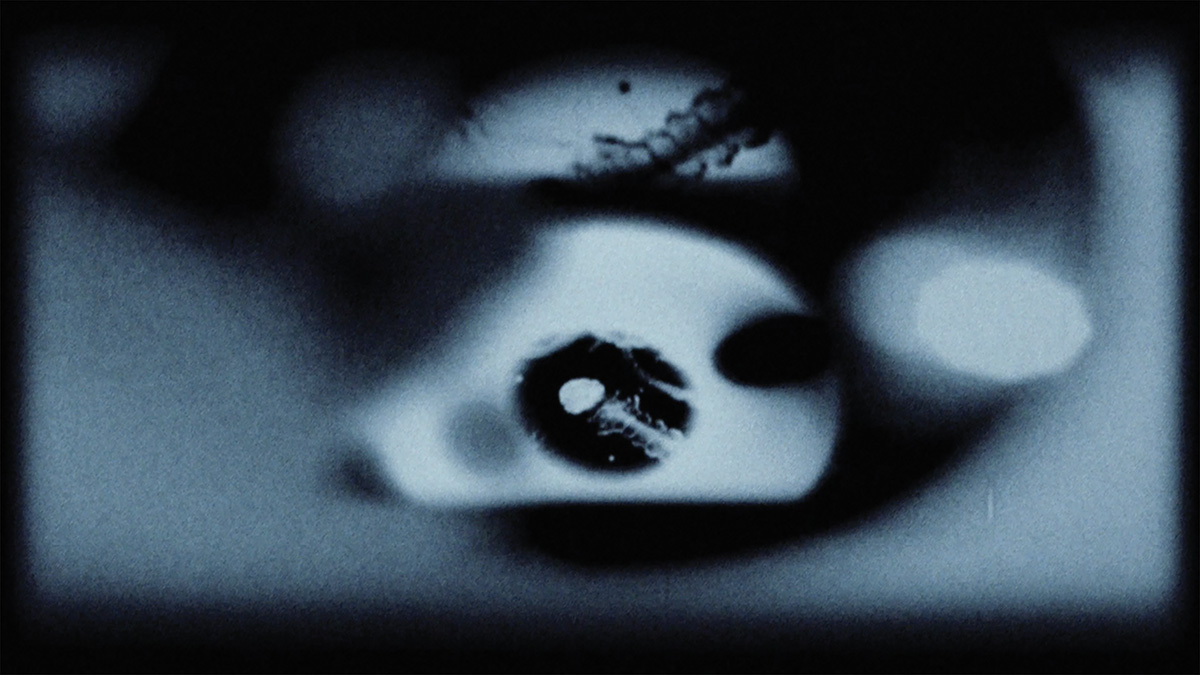
Sandro Aguilar
The Detection Of Faint Companions
Vidéo expérimentale | 0 | couleur | 14:0 | Portugal | 2021
Full Moon. Inside. Perhaps not alone.
Born in 1974 in Portugal, Sandro Aguilar studied film at the Escola Superior de Teatro e Cinema. In 1998, he founded the production company O Som e a Fúria. His films have won awards at festivals such as La Biennale di Venezia, Locarno FF, Gijón, Oberhausen,Vila do Conde, Indielisboa FF and have been shown in the most relevant film festivals worldwide. Two times nominated for the EFA – Best European Short Film Award. Retrospectives of his work have been programmed at Rotterdam IFF, BAFICI, New York Film Festival, Arsenal-Berlin and Oberhausen FF. In 2013, he was invited into the renowned DAAD Artist Residency, Berlin.
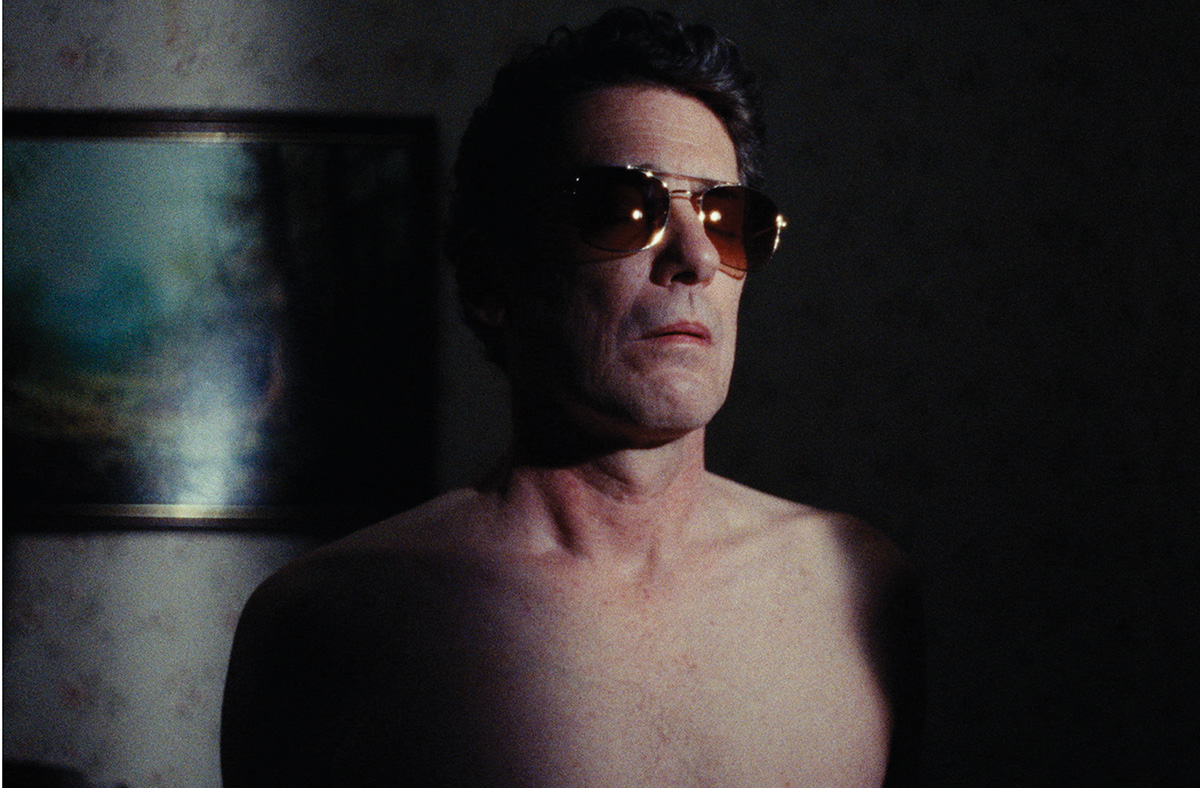

Sandro Aguilar
O Teu Peso Em Ouro
Fiction | hdv | couleur | 26:0 | Portugal | 2022
Oscar, a renowned hypnotherapist, takes advantage of the last moments in his hotel room to say goodbye to the dazzling Mercedes and relieve old Norberto of his sorrows
Born in 1974 in Portugal, Sandro Aguilar studied film at the Escola Superior de Teatro e Cinema. In 1998, he founded the production company O Som e a Fúria. His films have won awards at festivals such as La Biennale di Venezia, Locarno FF, Gijón, Oberhausen,Vila do Conde, Indielisboa FF and have been shown in the most relevant film festivals worldwide. Two times nominated for the EFA – Best European Short Film Award. Retrospectives of his work have been programmed at Rotterdam IFF, BAFICI, New York Film Festival, Arsenal-Berlin and Oberhausen FF. In 2013, he was invited into the renowned DAAD Artist Residency, Berlin

Sandro Aguilar
Strokkur
Documentaire | 0 | noir et blanc | 7:16 | Portugal | 2011
In the beginning the idea was to make something from nothing, in a neutral and unknown place. Collect images and sounds instead of producing them. The camera, the microphone and the mini-amplifier: tools that take away and then give back. We defined a rule: the sound shouldn?t illustrate the image and the image shouldn?t absorb the sound. Less than a hundred kilometres from Reykjavik we found Strokkur. A scar on the Earth that insists in not healing, gushing from the depths. We came closer. For three days we saw and heard the internal dynamics of the crevice: the boiling water that spat out every seven minutes and the thermal shock, given the eighteen degrees below zero of the atmosphere. The film was already there, the music too. Underneath the blizzard, the soaked amplifier was out of tune and produced strange noises. The camera was almost blown away with the wind gusts. Batteries did not resist the cold and died every fifteen minutes. We ran for shelter carrying the gear on our backs. Reload. Reheat. Start all over again. ?Strokkur? is above all a document. A log of an observation-dialogue, of what was left.
JOÃO SALAVIZA Born in Lisbon in 1984. He studied cinema at Escola Superior de Teatro e Cinema in Lisbon and completed his studies at the Universidad del Cine in Buenos Aires. His first short film, ?TWO PEOPLE?, 2005, was selected for several festivals and won the Take One Award in Vila do Conde. In 2009, with ?ARENA?, he won the Palme d?Or for best short film at the Cannes Film Festival and the award for best Portuguese short film at IndieLisboa. He then participated in several renowned international festivals such as Tribeca, Rotterdam, London and Pusan (PIFF). In 2010, he finished ?HOTEL MüLLER? (based on the work of Pina Bausch) and ?CASA NA COMPORTA? for the Portuguese entry in the 12th International exhibition of Architecture ? Venice Biennale. He is currently working in the short ?CERRO NEGRO? for the programme Próximo Futuro from Fundação Calouste Gulbenkian. In the summer of 2011, Salaviza will shoot the short ?RAFA? to be followed by the pre production of his first feature film.
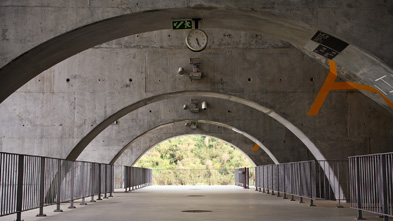

Sandro Aguilar
Sinais de Serenidade por coisas sem sentido
Fiction | hdv | couleur | 28:0 | Portugal | 2012
"Signs Of Stillness Out Of Meaningless Things" Sandro Aguilar Une comptine : « Quand les braises où les étincelles du feu atteignent la marmite d?eau, cela signifie qu?il vente... » Et toujours ce climat mystérieux qui hante toute l?oeuvre de Sandro Aguilar.
Sandro Aguilar (1974, Portugal) studied film at the Escola Superior de Teatro e Cinema. In 1998 he founded the production company O Som e a Fúria. His first fiction feature film was Uprise (2008). Aguilar's short films have won awards at festivals such as La Biennale di Venezia, Locarno and Vila do Conde. Mercury (2010) is in competition for the Tiger Awards for Short Films at the IFFR 2011.
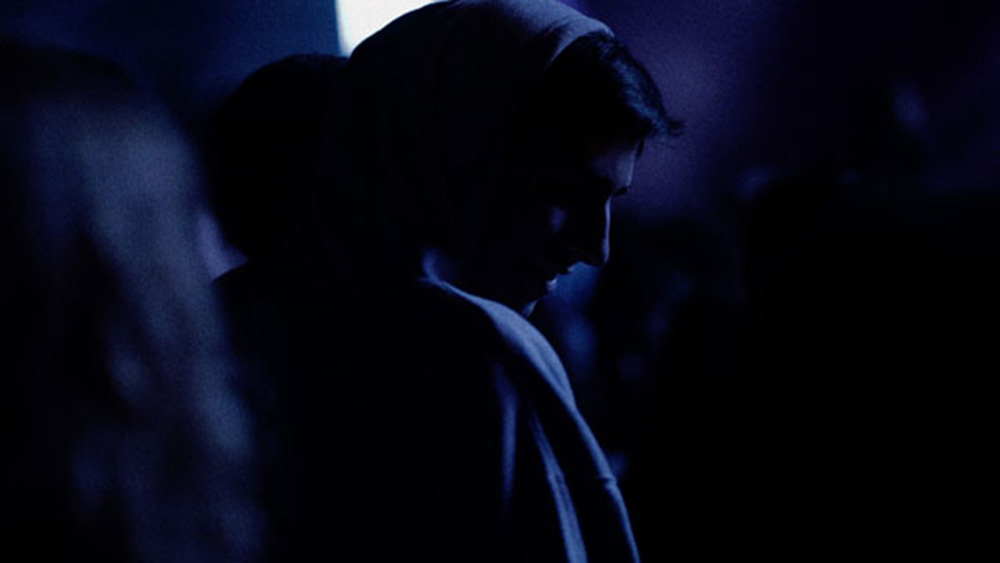
Sandro Aguilar
Undisclosed Recipients
Vidéo | hdv | couleur | 25:0 | Portugal | 2015
Avant et après ce second baiser.
Born in 1974 in Portugal, Sandro Aguilar studied film at the Escola Superior de Teatro e Cinema. In 1998 he founded the production company O Som e a Fúria. His films have won awards at festivals, such as La Biennale di Venezia, Gijón, Oberhausen and Vila do Conde, and have been shown in Torino, Belfort, Montreal, Clermont-Ferrand among others. Retrospectives of his work have been programmed at Rotterdam IFF and BAFICI.

Sandro Aguilar
VOODOO
Fiction | 35mm | couleur | 30:0 | Portugal | 2010
All sympathetic magic is based upon two principles: the first called the Law of Similarity says that likes produce likes, or that an effect resembles its cause; the second, called the law of contagion or contact says that all things having been in contact with each other continue to react upon one and another at a distance even after they have been severed or disconnected. A fearful man meets a disquiet woman. Do you believe in magic?
Born in 1974 in Portugal, Sandro Aguilar studied film at the Escola Superior de Teatro e Cinema. In 1998 he founded the production company O Som e a Fúria, which has been since then one of the most prominent Portuguese production structures, recognized by the long list of films, produced within its tutelage, that are selected and awarded at the most prestigious internacional film festivals. The short films directed by Sandro Aguilar have won awards at festivals, such as La Biennale di Venezia, Locarno, Vila do Conde, and have been shown in Rotterdam, Belfort, Montreal, Clermont-Ferrand among others. He has also directed a feature film in 2008, entitled A ZONA.
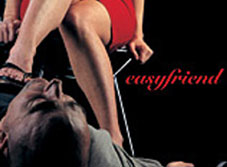

Roberto Aguirrezabala
Easyfriend
Création numérique | 0 | | 0:0 | Espagne | 2007
Vous êtes-vous déjà demandé ce que serait la compagnie d'un ami virtuel ? Quand Elisabeth Vogler perdit sa voix en plein flux alors qu'elle interprétait Electre, elle ignorait qu'elle avait été volée par Alma qui sera son alter-ego dans le tortueux procès de la recouvrance. Elles déménagent toutes les deux dans une maison près de la mer afin qu'Elisabeth puisse retrouver sa voix, retrouver son identité. Une recherche duale de l'identité par deux personnages qui progressivement se fondent en un seul. Le dialogue-monologue agit tel un véhicule fragile pour le temps de la rencontre qui les attend. C'est "Persona" de Ingmar Bergman, un film qui définit le cinéma et marqua Oriol, le protagoniste de "Easyfriend". "Easyfriend" provient d'une recherche de l'identité à travers la conversation. L'utilisateur ne définit pas son identité ni ne décide comment il souhaite apparaître aux autres. Il n'aura pas une face visible. L'auteur dit ne pas être interessé par ce qu'il dit de lui-même. Il se préoccupe plus de son inconscient et de ce qu'il prétend ne pas être. "Easyfriends" est une communauté grandissante constituée de robots. Le projet utilise l'Artificial Emotional Intelligence pour générer des identités virtuelles dynamiques. L'utilisateur, en entrant pour la première fois, projette son désir, ce qu'il attend d'une relation : amitié, amour, sex, etc. Lorsqu'il in-forme l'identité de son ami virtuel dans un processus psycho analytique, il construit un futur, des attentes et une expérience. A partir de là, il pourra se débrouiller dans sa relation ainsi que sa volonté le lui dicte : il peut s'y raccrocher ou abandonner. Son ami virtuel demeurera actif aussi longtemps que cette relation existera et lui procurera de la conversation. L'effort de parole est la condition requise pour que son robot soit maintenu en vie. Quand le créateur cesse de discuter, son robot demeure inactif. En cela, "Easyfriend" devient un scénario de vie artificiel, reconstruisant les paramètres de la vie humaine réinterprétés à travers des entités virtuelles. Simultanément comme un projet à l'intérieur d'un projet, un plan fictif est développé où figurent deux personnages poursuivant le moment auquel ils ont tant aspiré, quand ils fusionnent dans la projection de leur désir. Ce qui fait défaut à leur désir, ce n'est pas une relation conventionnelle mais une situation qui les favorise et réponde à leurs besoins en tant qu'individus incomplets et instables. En ce sens, "Easyfriend" est un projet hybride entre le cinéma et le net art, explorant la narration par internet. A travers une structure vidéo en chapitres, un plan fictif fractionné évolue. Oriol est un artiste qui travaille dans la vidéo et vient en ville pour exposer son travail lors d'un festival. Alors qu'il vient d'arriver, il se retrouve avec Laura, une journaliste d'art. La conversation devient éprouvante. Elle attaque férocement son oeuvre, l'accusant d'avoir une perception distante de l'art pendant qu'il voit en elle l'évocation d'une relation passée dont il n'est pas encore guéri et qui a marqué sa vie. Dès le début de l'interview, tout va très vite. Ils appréhendent la relation avec des intentions différentes et la confrontation qui s'ensuit déclenche un concert d'événements auxquels ils doivent faire face la tête haute. Le récit tout entier est construit en une forme fragmentée. Ils sont des restes de la vie passée des personnages, de leurs relations passées, d'actions dont on ne peut témoigner mais qui peuvent être rappelées. Il y a d'autres moments quand Oriol parle à la caméra, au spectateur dans un acte de confession introspective. Nous pouvons garder un oeil sur le bureau de Laura pour déceler des indices qui puissent nous aider à découvrir ce qu'elle cherche en Oriol. Nous voyons la mise en corrélation, le dire, le silence, le mensonge, la feinte, le fait de dire la vérité, les dissimuler et les révéler. L'utilisateur est un élément actif du projet en ce qu'il ou elle a à chercher, connecter et reconstruire les flux narratifs de l'histoire. Le récit ne se déroule pas en séquences, tout advient plutôt abruptement. L'histoire peut commencer au milieu de façon à pouvoir avancer, et ensuite recommencer à nouveau à un autre point. Les variations sont infinies. L'utilisateur devra constamment avancer et reculer dans une action qui requiert qu'il prenne l'initiative de se rendre la logique des scènes intelligible. Pour cela il disposera de plusieurs outils désignés afin de pouvoir utiliser cette expérience narrative. Il aura un guide à sa disposition pour organiser la séquence des chapitres en une opération qui le transforme en monteur de l'histoire. D'autres instruments existent aussi : un conseiller pour les usagers et les robots, un moyen de communiquer pour que les usagers puissent interagir avec d'autres qui surfent simultanément et pour donner vie à une expérience collective, une messagerie électronique, etc. A un point particulier du récit, les deux façons d'expérimenter "Easyfriend", la population robot et le plan fictif s'entrecroisent inévitablement, jamais plus pour être séparés. La conversation avec l'easybot devient un mécanisme narratif à la disposition de l'utilisateur, où le flot de l'histoire est plus profond. L'easybot peut être interrogé sur les personnages, sur ce à quoi ils pensent et il deviendra alors possible d'atteindre une connaissance de haut niveau de "Easyfriend"
Roberto Aguirrezabala est né en 1971 à Bilbao. Il est diplômé en Audiovisuel et Peinture. Après s'être consacré à la peinture et à la sculpture de 1990 à 1995, il concentre son activité artistique sur le net art et les média audiovisuels. Depuis 1995 il travaille comme directeur artistique pour l'Internet. Il a fondé en 1999, l' Agencia Interactiva Adclick, une agence spécialisée dans la réalisation de projets pour l'Internet et la communication digitale. Actuellement il axe sa recherche sur le développement des systèmes narratifs cinématographiques sur Internet, sur la photographie, la vidéo et le cinéma.
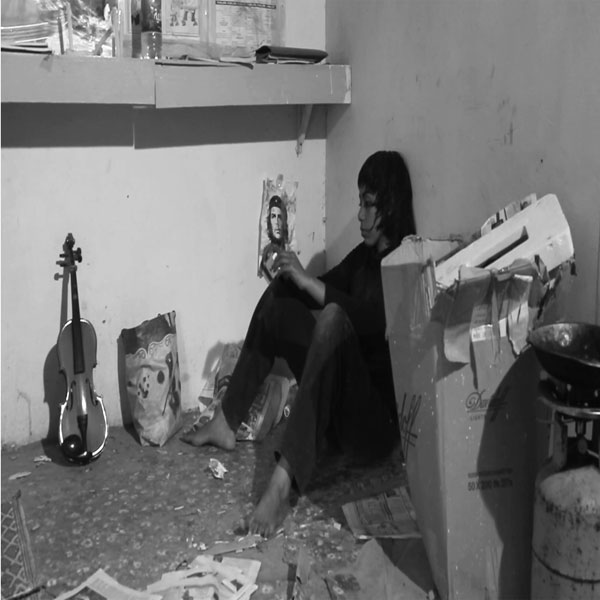
Abdalla Ahmed, N/A
Khalf Al-zakera
Fiction | | couleur et n&b | 7:59 | Soudan | 2012
For the sake of freedom she leaves the door to her memory open. So Omer enters her room every day healing her broken heart through his word and spirit.
My Name is Abdalla Mohamed Gaffar Ahmed, a young and aspiring Sudanese film director who shot and directed my first short feature entitled ?Beyond Memory? ON 11-2012, And second short documentary film about " US Technology Sanctions on Sudan" ON 1-2014 . Born in the United Arab Emirates Since 1990, I moved back to Sudan in 2002, when my family resettled back to my native land. I am currently enrolled in a local undergraduate study program undertaking a media degree in ALMASHREQ Universty of Science and Technology. I consider my recent found interest and work in film making to be the crowning of my collective long running interests in photography and creative writing. Throughout my childhood and early youth, living in diverse spaces, has helped increase and develop my sensitivities towards international cultures all which seem to feature in the pattern of my arts. As a young artist I hope to retain my experimental and dependent artistic nature, being the sole mode of which I can express myself and the dynamic and vibrant context around me. Abdalla Ahmed 00249910112202 a.nirmen@hotmail.com
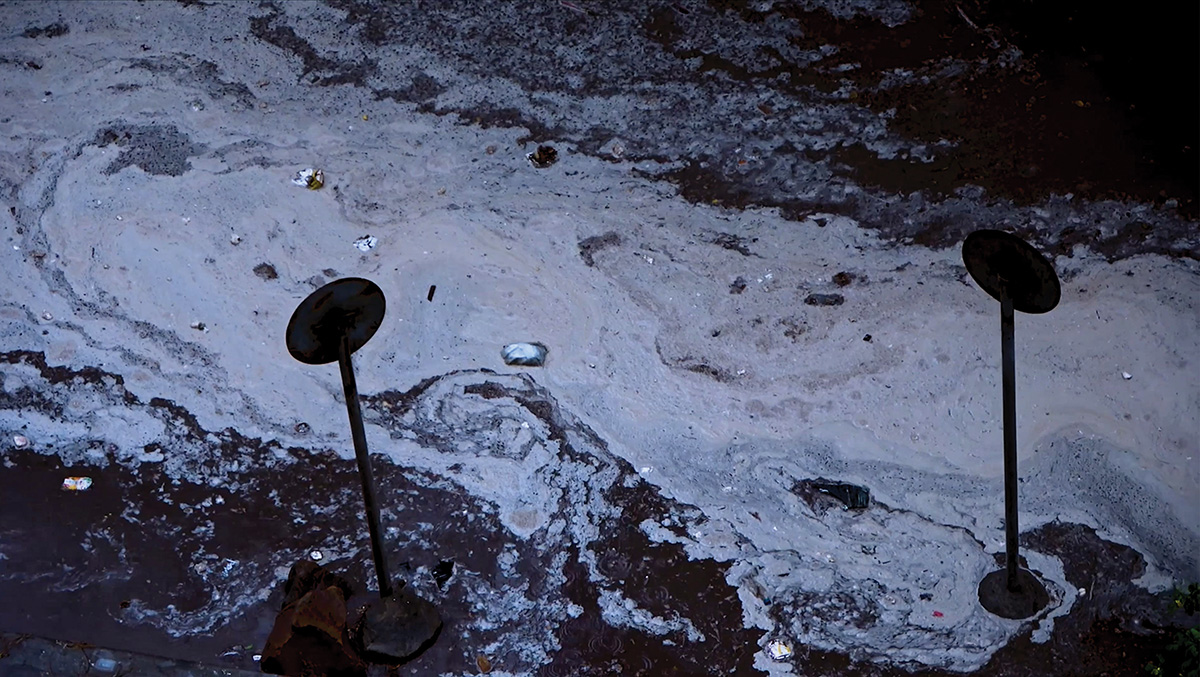

Noureldin Ahmed
Letters of Confinement
Doc. expérimental | digital | couleur et n&b | 20:0 | Egypte | 2021
The Letters of Confinement is an essay film filmed entirely within the confinement of the filmmaker’s house during the quarantine. The first half of the film covers the story of creation according to the the ancient Egyptian genesis. The second half introduces the counter-narrative of creation based on a poem by Ibn Al-Farid, A Sufi master. The film goes on to cover stories like the deluge, the annual inundation, the nature of names, and perversions dictated by the confinement, like voyeurism and eavesdropping. During the documentation process, the surroundings work in accordance to the will of the filmmaker as if the exterior reflects his interior desires. The film follows a collage-like format. Collecting different stories and unrelated footage within the frame of the film. In doing so, an alternative narrative is created where fiction and reality overlap.
Noureldin Ahmed is an independent filmmaker, film curator, translator and visual artist; born, raised and based in Cairo, Egypt. He studied Media Design at the faculty of Applied Arts and Sciences at the German University in Cairo. In his work, Nour questions the notion of self identity within the urban context, namely in Cairo, opening up his self-centered pieces to public viewership and interpretation. Nour has participated in a number of group exhibitions in the past years. His first film, Summertime Dreams, was screened at Ismailia International Film Festival for Shorts and Documentaries in 2019. In 2020 he held his first solo exhibition, A Self-Portrait with a Halo and a Pomegranate. Nour is one of the recipients of a number of grants, including: The Self Organization Grant from Mophradat, 2021, and On the Road Again, Again from Pro Helvetia Cairo, 2022. He is a member of a cinematic collective, A Kiss in the Desert, and a research group, cifrcifrcifr. He worked as a programmer & programme co-ordinator for the short film competition at Cairo International Film Festival, a coordinator of the Arabic publications at Gouna Film Festival, in addition to working as an assistant director, assistant producer, editor and translator. Nour is currently undertaking his master's degree in Film and Screen Studies at the University of Cambridge, UK.
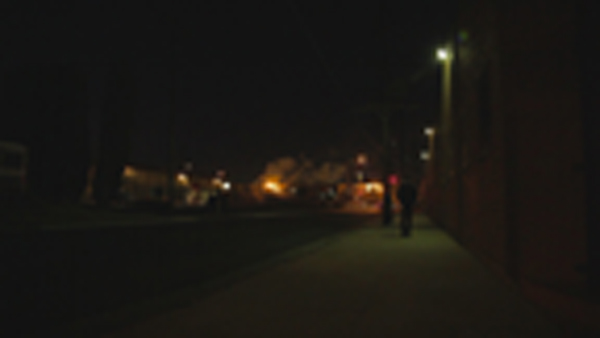
Stella Ahn
Curriculum
Doc. expérimental | hdv | couleur | 8:34 | USA | 2013
Curriculum is a tiny scale documentary set in Los Angelescentered around the larger theme of knowledge. It loosely follows a character, a tutor for the No Child Left Behind Act implemented by the Los Angeles Unified School District. Running through a few simple ideological questions rather than investigatingcharacters, facts, or events (as one would expect of a documentary), the film was made to open up the matter of education in Los Angeles in relation to socio-economic as well as subjective positions.
Stella Ahn is a Los Angeles native. With a B.A. in Film & Media Studies from the University of California, Irvine, she went on to California Institute of the Arts, where she received her MFA in Film/Video. She likes to make experimental narratives, essay films, and video loops. Her work focuses on unsteadily dismantling the intersections of image, fiction/reality, and politics.
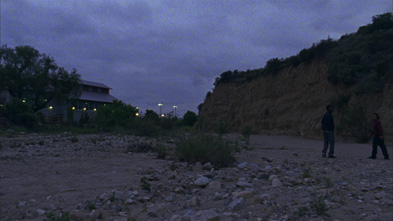
Stella Ahn
Newhall Loop
Vidéo | 16mm | couleur | 13:0 | USA | 2012
A single channel video piece, looped. The piece is about 13 minutes long, with 1 minute of black over silence at the end. It features two characters, no dialogue, and depending on how one looks at it, either no narrative or a countless number of narratives. The soundscape is equally as important as the visuals. It is immersive, taken from everyday life, containing the bellows of trains to automobile traffic to background music at a shopping mall. Newhall is the district in Southern California in which the piece was conceived and shot.
Stella Ahn is a Los Angeles native. With a B.A. in Film & Media Studies from the University of California, Irvine, she went on to California Institute of the Arts, where she received her MFA in Film/Video. She likes to make experimental narratives, essay films, and video loops. Her work focuses on unsteadily dismantling the intersections of image, fiction/reality, and politics.
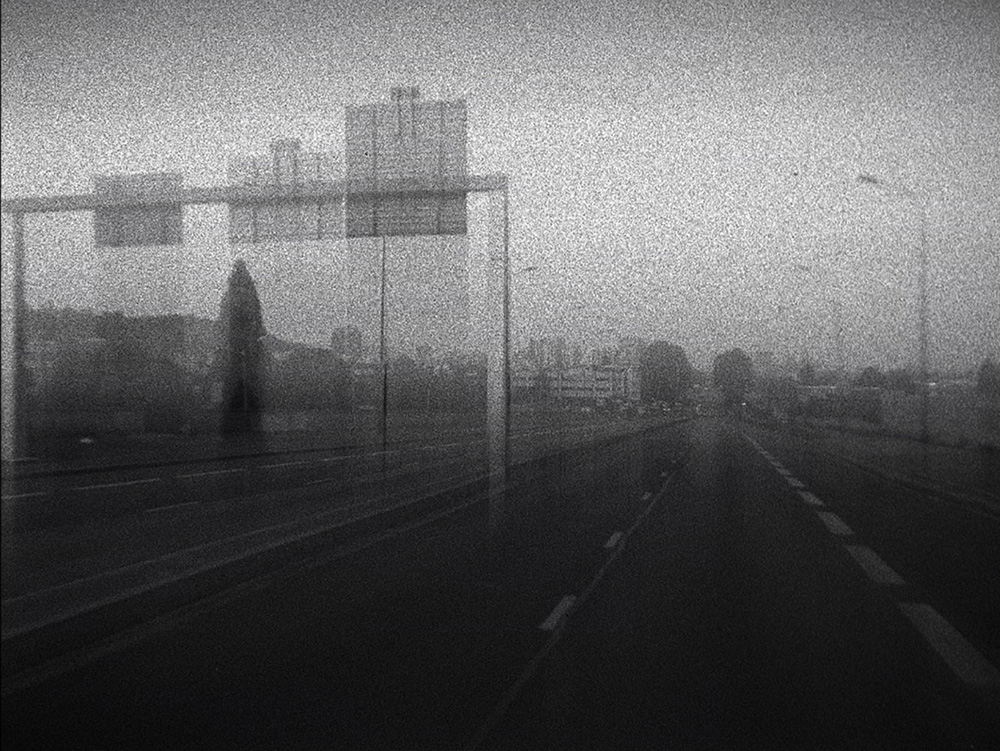
Mehdi Ahoudig, Anna Salzberg
On ira à Neuilly inch'Allah
Doc. expérimental | hdv | couleur | 20:0 | France | 2015
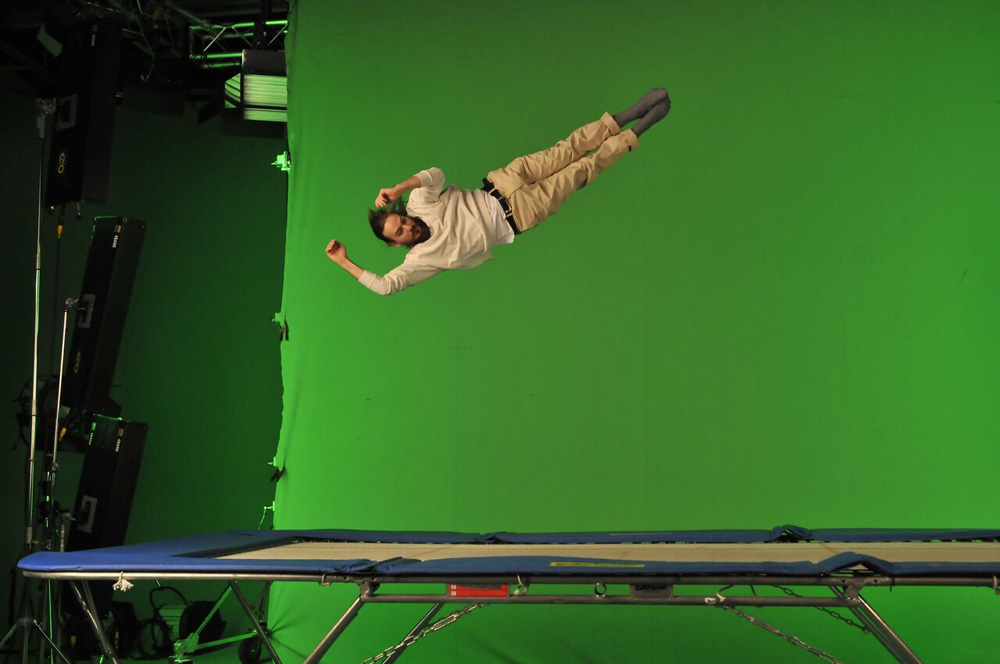
Eija-liisa Ahtila
Tutkimuksia draaman ekologiasta (Studies on the Ecology of Drama)
Fiction expérimentale | 4k | couleur | 26:26 | Finlande | 2017
The film uses the methods of presentation as a path to the company of other living beings. It expands upon the issues of ecological moving image narrative, the focus being on presentation, imaging and imagination in the context of the moving image.
Née en Finlande en 1959, Eija-Liisa Ahtila vit et travaille à Helsinki. Elle a étudié à l’Université de Californie à Los Angeles, au London College of Priting et à l’Université d’Helsinki. Le travail d’Eija-Liisa Ahtila, installation et film, s’organise conceptuellement autour de la manière dont se construisent images, langages, fils narratifs et espaces. Après avoir examiné les aspects existentiels de l’adolescence et de la découverte de la sexualité, les difficultés des relations familiales, la désintégration mentale et la mort, dans travaux les plus récents, l’artiste questionne les procédés de perception et d’attribution de sens, entre autres à travers des thématiques liant réflexions sur la culture et aspects et existentiels, telles que le colonialisme, la foi et le post-humanisme. Elle a obtenu le prix ARTE Award pour le meilleur film européen au Festival International du Court Métrage d’Oberhausen (2012), le Grand prix du Festival Curtas Vila do Conde (2002), le Prix du meilleur court métrage nordique au Nordisk Panorama (2000). En 2011, elle a été membre du jury du Festival du film de Venise. En 2013, elle a été présidente du jury au FID Marseille. Son travail a été montré dans des musées et festivals, notamment au Musée Guggenheim de Bilbao, au Monderna Museet (Stokholm), à la DHC/Art Foundation for Contemporary Art (Montréal), au Jeu de Paume (Paris), au Museum of Modern Art (New York), au Museo d’Arte Moderna e Contemporanea (Bolzano, Italie), et à la Tate Modern (Londres). Ses films ont été projetés notamment au Festival international du film de Berlin, au Festival du film de Sundance, au Festival international du film de Venise.
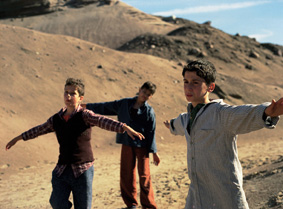
Eija-liisa Ahtila
MISSÄ ON MISSÄ?
Film expérimental | 35mm | couleur et n&b | 55:50 | Finlande | 2009
WHERE IS WHERE? (S-16 mm/ HD; 1:1:85; DD 5.1) Crystal Eye ? Kristallisilmä Oy ONE LINER La Mort et La Poétesse transposent dans la réalité d?aujourd?hui un fait divers de l?époque de la guerre d?Algérie : deux petits garçons ont tué leur meilleur ami, un garçon français. BRIEF SYNOPSIS WHERE IS WHERE? est un film expérimental et une installation, basé sur un fait divers de l?époque de la guerre d?Algérie. Réagissant aux atrocités perpétrées par les Français, deux petits garçons ont alors assassiné leur camarade de jeux, un petit garçon français du même âge. Le film débute dans le monde contemporain, quand la Mort entre dans la maison de la poétesse. Celle-ci se met à explorer l?événement passé qui se confond petit à petit avec l?instant présent. Dans le jardin de l?arrière-cour, la brume se lève, laissant apparaître une barque d?une couleur éclatante qui flotte dans la piscine. Adel et Ismael y sont installés. SYNOPSIS WHERE IS WHERE? explore le colonialisme et la coexistence de deux cultures différentes. Le point de départ est un fait réel de l?époque de la guerre d?Algérie, à la fin des années cinquante. Le pays était alors sous la tutelle de l?administration française et venait d?entamer une longue lutte pour l?indépendance, contre l?Etat colonisateur. Cette époque fut d?une violence extrême, marquée par les attentats des indépendantistes et par la dure répression de l?administration française. En réaction à, ou par conséquence des atrocités commises par les Français, deux petits garçons algériens ont tué leur camarade de jeu, un petit garçon français du même âge. Malgré ce point de départ ancré dans la réalité, c?est la relation de l?évènement au monde d?aujourd?hui qui est au c?ur de l?histoire. La narration débute dans l?instant présent, le geste des garçons et les événements de l?Algérie s?y confondant petit à petit. Le meurtre est examiné à la lumière de la situation mondiale actuelle d?une part, et d?autre part en tentant d?apporter une perspective historique aux conflits arabo-occidentaux ? tout en abordant les événements du point de vue de l?individu, à travers son expérience propre. L?histoire comporte trois personnage principaux : Adel et Ismael, les deux jeunes Arabes auteurs du meurtre, et une poétesse européenne, une femme d?une quarantaine d?années. La narration débute avec l?arrivée de la mort dans la maison de la poétesse. L?expérience de la mort est mise en parallèle avec l?arrivée dans un nouveau pays, et avec une remise en question de l?existence et de l?identité. Dans ses activités de poète, à l?aide de mots, la femme se met à décortiquer le fait divers et les éléments qui y sont liés : les différences religieuses, la culpabilité, la recherche de la ressemblance et de la communion. Petit à petit, le point d?ancrage se déplace du monde de la poétesse vers la réalité des garçons. Le meurtre se détache de son époque et est transposé dans monde d?aujourd?hui. Dans le jardin de l?arrière-cour, la brume se lève et laisse apparaître une barque qui flotte dans la piscine et où sont installés Adel et Ismael. La poétesse passe en arrière-plan, et c?est la parole des garçons et le caractère inévitable de leur geste, ses raisons et ses conséquences, qui se trouvent au centre de l?histoire. L?action se déroule dans une réalité fictive interne au film, ainsi que dans un décor référentiel aux airs de théâtre. L?effet recherché est de rendre la narration plus vivante, mais aussi d?explorer la façon dont les différents niveaux de narration fonctionnent ensemble. Le mode de narration est donc expérimental ? l?information est fournie non seulement de façon traditionnelle par ce qui se passe directement sur l?écran, mais aussi par les images et les sons qui acquièrent une plus grande importance. L?objectif est de donner une autonomie aux éléments expressifs de l?image en mouvement, afin qu?ils ne soient plus simplement subordonnés à l?histoire mais pour qu?ils transmettent une information sensorielle propre (ex. scène avec les danseurs soufis, paysages de pays différents, scènes de chants). Ainsi, l?histoire gagne en ampleur, en dimension personnelle et en charge émotionnelle, la chronologie traditionnelle se brise sans pour autant perdre le fil de la narration. La présence des acteurs suit cette même logique : l?accent dans le dialogue entre la Mort et la Poétesse n?est pas tant dans l?information transmise par les mots que dans les expressions et les postures (ainsi que dans les contacts entre les acteurs et dans l?action, bien évidemment).
EIJA-LIISA AHTILA Born in 1959 in Hämeenlinna, Finland, Eija-Liisa Ahtila is visual artist and filmmaker. Her films and multi-screen installations explore and experiment with narrative storytelling, creating extraordinary tales out of ordinary human experiences. Her works deal with separation, loss, sexuality, relationships among family members, mental disintegration, and death. They investigate the processes of perception and the attribution of meaning, with breaking down the story on several screens around the viewer in the space. Making installations and films has become for her a process of identifying the links between images, sounds, rhythms, light, characters and words, and using them to approach and construct the story. Eija-Liisa Ahtila was the recipient of the Artes Mundi of Cardiff, Wales in 2006, the Vincent Van Gogh Biannual Award for Contemporary Art in Europe, Maastricht, The Netherlands, as well as the Coutts Contemporary Art Foundation Award, Switzerland, both in 2000, and the Edstrand Art Prize, Sweden in 1998. Ahtila attended Helsinki University, Faculty of Law (1980-85); Independent Art School, 198184; and London College of Printing, School of Media and Management, Film and Video (1990-91). She received a Certificate from U.C.L.A. in Film, TV, Theater and Multimedia Studies, Los Angeles (1994-95) and attended special courses at the America Film Institute, Advanced Technology Program, Los Angeles (1994-95). Ahtila has exhibited extensively at numerous museums and film festivals around the world and her films have received distinctive film awards and prizes over the years. Her work has also been widely seen on television in Europe. British Film Institute has published a home DVD box of her films titled The Cinematic Works of Eija-Liisa Ahti/a. Eija-Liisa Ahtila currently lives and works in Helsinki.
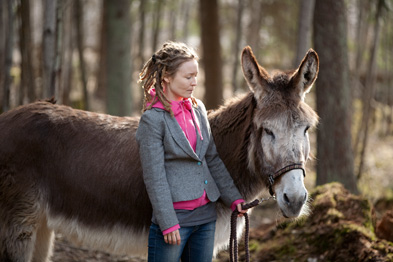
Eija-liisa Ahtila
Marian Ilmestys
Vidéo | hdv | couleur | 34:44 | Finlande | 2011
The Annunciation is a film in which one of the central motifs of Christian iconography is constructed and re-enacted through moving image.
Eija-Liisa Ahtila Born in 1959 in Hämeenlinna, Finland, Eija-Liisa Ahtila is visual artist and filmmaker. Her films and multi-screen installations explore and experiment with narrative storytelling, creating extraordinary tales out of ordinary human experiences.
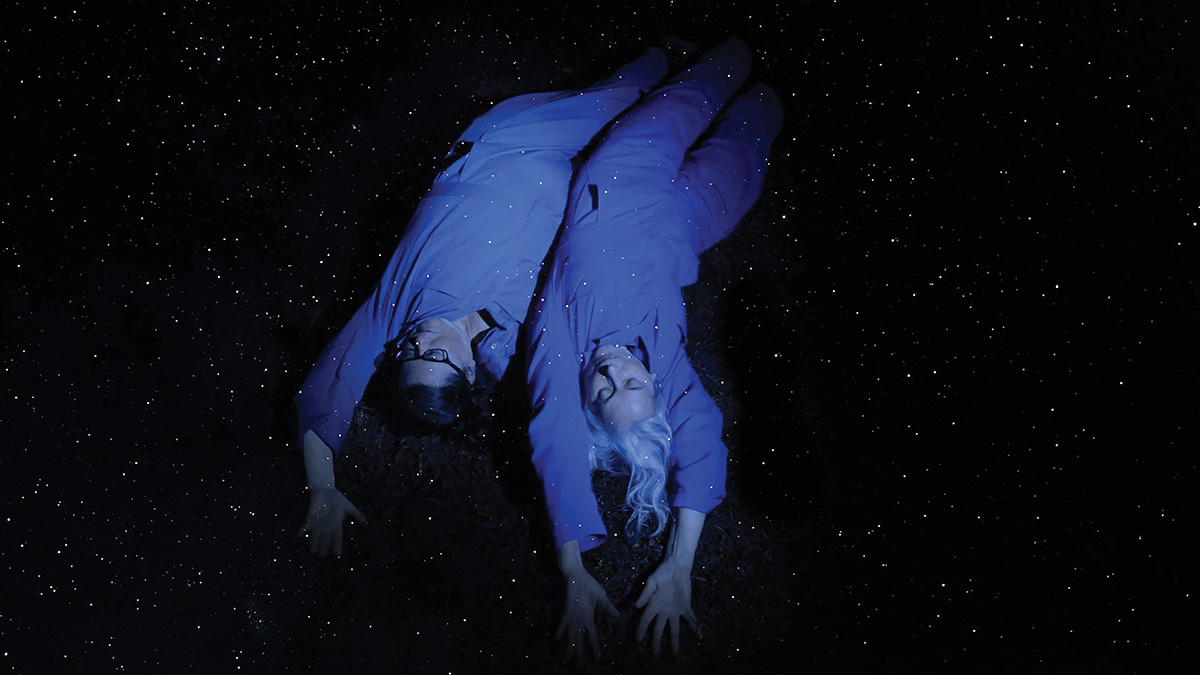

Peggy Ahwesh, Jacqueline Goss
OR119
Vidéo expérimentale | hdcam | couleur | 61:0 | USA | 2022
OR119 is a theoretical musical based on the ideas of radical psychologist Wilhelm Reich who, as Freud’s favorite student, centered his study on the intersections of psychoanalysis and Marxism. Reich’s best work advocates for a re-imagining of family structure and gender roles, sexual liberation for younger people and the working poor and a deep understanding of the effect of fascisms on the body. OR119 is based on quotations by Reich set to song and also in imaginary conversations between Reich and a number of contemporary feminist thinkers. With a group of women friends in improvisation, we playfully examine the unsettled legacy of Reich and his surprisingly relevant dynamic with feminist thought. Reich proposed Orgone, a universal life energy (akin to Chi) based on sex and positive expression that Reich claims to have discovered, and here we grant him the honor of the next number on the periodic chart (OR119) for his discovery. The musical resonance and vibrations of the voices in song make manifest the invisible positive energy that Reich believed was universal. This is by no means a bio-pic! but it is a celebration of life's potential for immersion in nature, the cosmos and interactive energy.
PEGGY AHWESH has worked since the 70's in wide range of technologies and styles in an inquiry into feminism, cultural identity and genre. Featured in the Whitney Biennial (1991, 1995, 2002). Solo exhibitions include: Spike Island (2021); Kunsthall Stavanger (2022); Cleave (2019) Microscope Gallery, New York. Film retrospectives: Anthology Film Archives/NYC, Guggenheim Bilbao/Spain, New Media Fest Seoul/Korea, BFI/London and others. Ahwesh is Emeritus Professor from Bard College and al-Quds Bard College, West Bank, Palestine, where she taught media production and history. Collaborator JACQUELINE GOSS makes movies and web-based works that explore how political, cultural, and scientific systems change our sense of self through animation and live action in documentary and essay forms. Her work has shown at Eyebeam Atelier, The Wexner Center for the Arts and festivals in New York, London, Rotterdam. Goss has received awards from the Tribeca Film Institute, Creative Capital Foundation, the Rockefeller Foundation, Jerome Foundation, Herb Alpert Foundation, the United States Artist Award and the Berliner Kunstlerprogramm. Her videos are distributed by Video Data Bank in Chicago. She teaches Media at Bard College